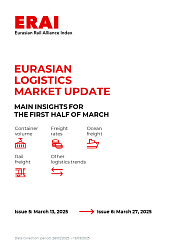Xeneta’s recent data shows shipping costs from the Far East to Europe spiked more than 200% in the first 52 days of the Suez crisis, outpacing the increase in rates seen during the first 52 days of the pandemic.
Xeneta market analyst Emily Stausbøll said: «Rates have not hit anywhere near the levels we saw during Covid-19, but the sudden nature of the Red Sea crisis has seen a more rapid increase in rates, which is arguably creating even more disruption than during the early months of the pandemic.»
Xeneta warned: «Shippers are becoming increasingly impatient and suspicious of carriers seeking to keep rates elevated for as long as possible.»
On the latest episode of The Loadstar Podcast, host Mike King notes that shippers are receiving one lump sum for all applicable surcharges, which could lead to confusion and lack of transparency.
Director of the Global Shippers Forum James Hookham said this could include peak season and EU ETS surcharges, Suez Canal transit fees, re-routing costs, etc.
He told the Podcast: «There’s a lot of extra money being demanded out there and, given the heightened sensitivity and especially the experiences during Covid, I think it would be a smart move if the shipping lines were a little bit more transparent about where these surcharges come from, and why they think they’re justified.»
Listen to this clip from the latest Loadstar Podcast about shippers calling for more transparent surcharges
Use Up/Down Arrow keys to increase or decrease volume.
Xeneta’s chief analyst, Peter Sand, added: "Everyone is accusing everyone at the moment, which is normal during situations when there is so much uncertainty in the market.
«Ocean freight carriers did not invent this crisis and it takes time for them to put in new shipping networks to deal with the disruption caused by diverting from the Suez Canal.
«However, you can also see this from the shipper perspective, maybe viewing the rate increases as carriers acting opportunistically to maximise the money they can make.»
Ms Stausbøll said rates would come down once carriers were able to deal with the capacity crunch in the Far East that resulted from ships being delayed returning from Europe via the Cape of Good Hope.
«At the moment, shippers may accept the carrier argument that it takes time to react to such an unexpected and sudden crisis, but that will only last so long, and we may see rates begin to flatten or decline sooner than many anticipated.»
Mr Hookham, told The Loadstar Podcast shippers should see stability in schedules and arrivals now that new arrangements, going around the Cape, had somewhat settled into place.
And Alphaliner noted that spot rates had eased recently, despite the traditional boost seen in the run-up to Chinese New Year.
It said: «The Shanghai Containerized Freight Index (SCFI) dropped 2.7% to 2,179 points on Friday, marking two consecutive weeks of decline from its peak in mid-January. The trend means shipping markets will not experience the usual spike in the week before the CNY celebrations.»
Asia-North Europe rates declined last week, although Asia-North America rates continued their rise.




